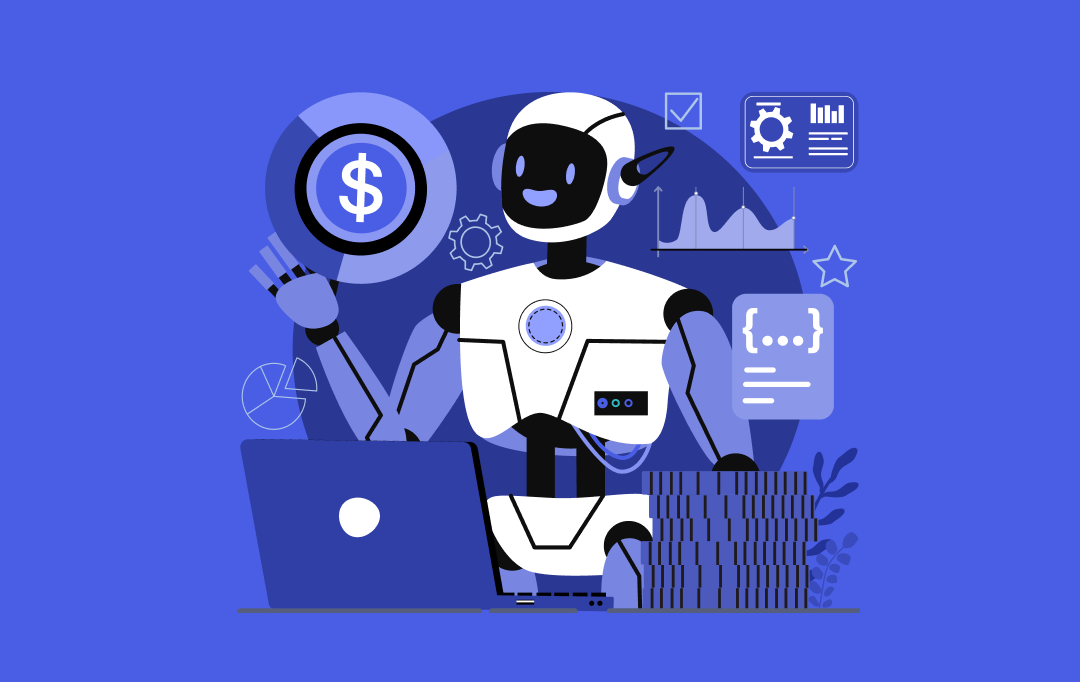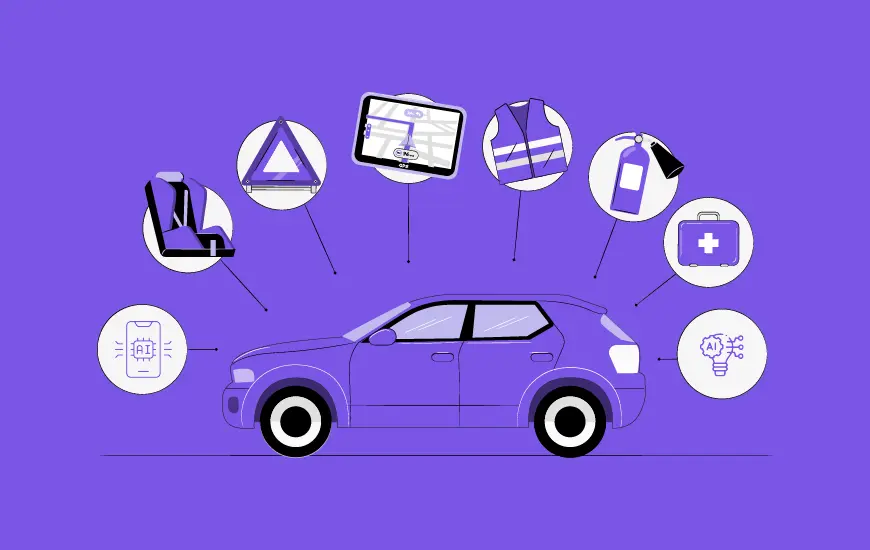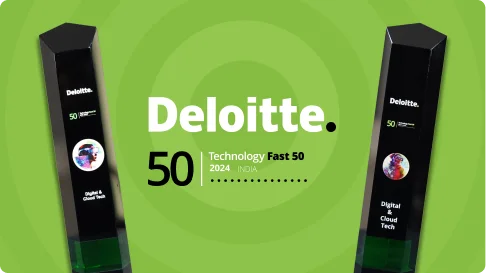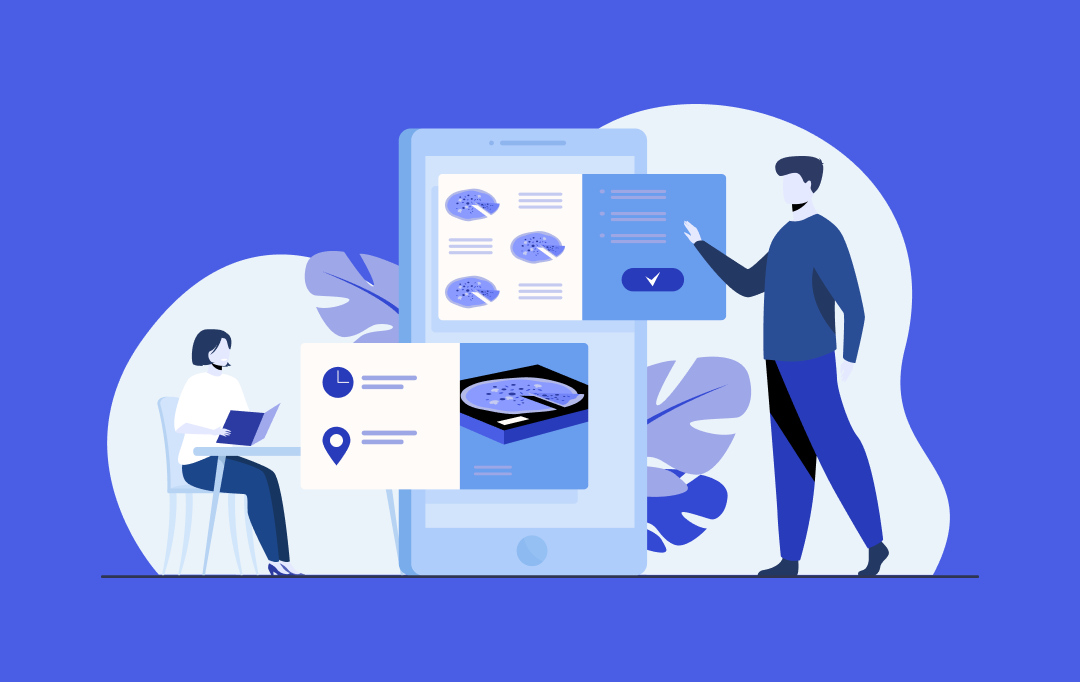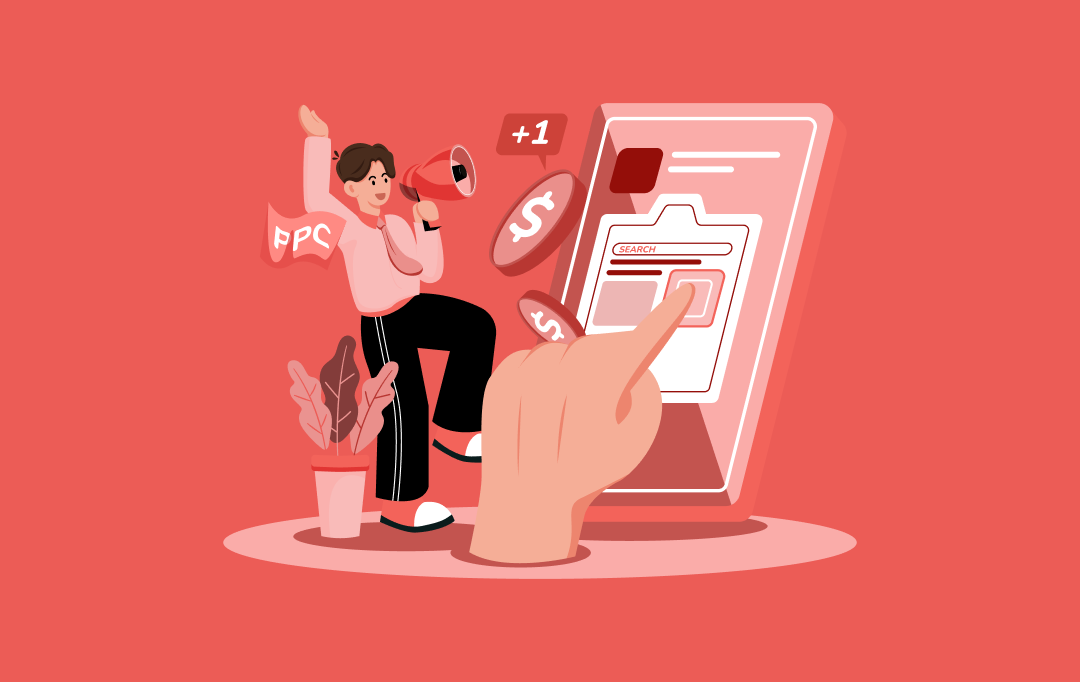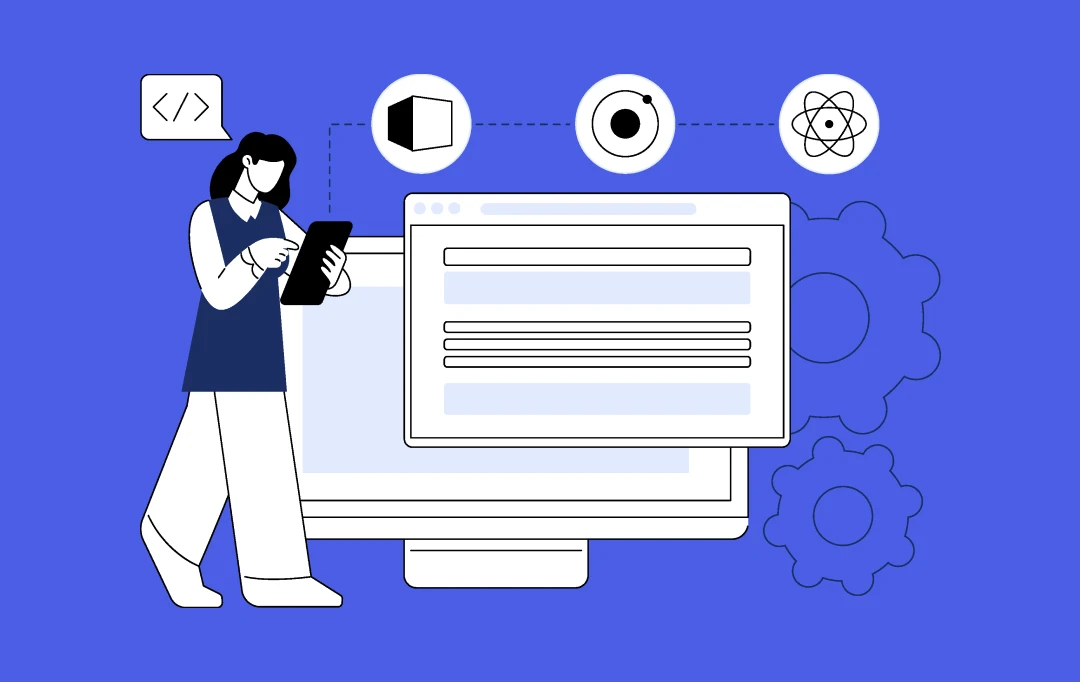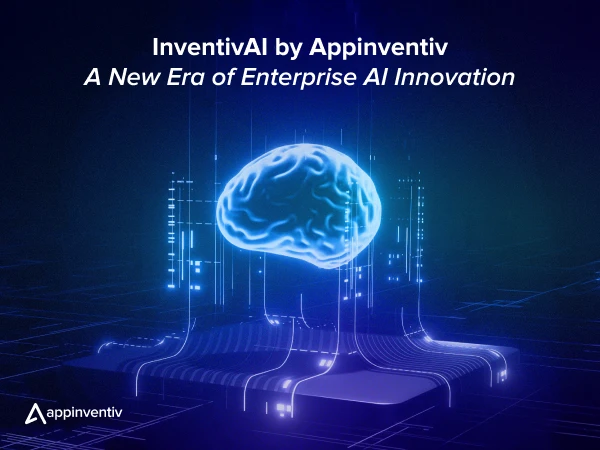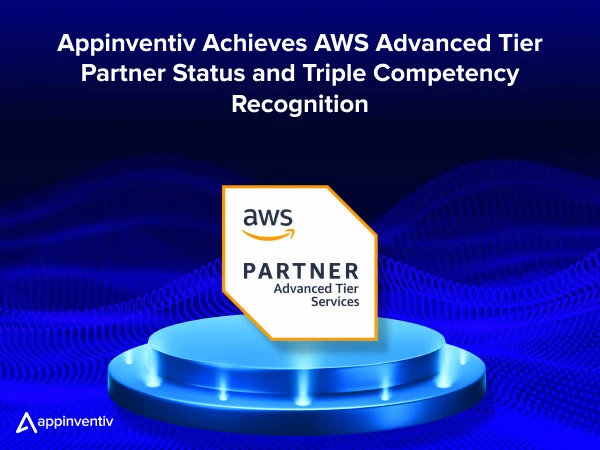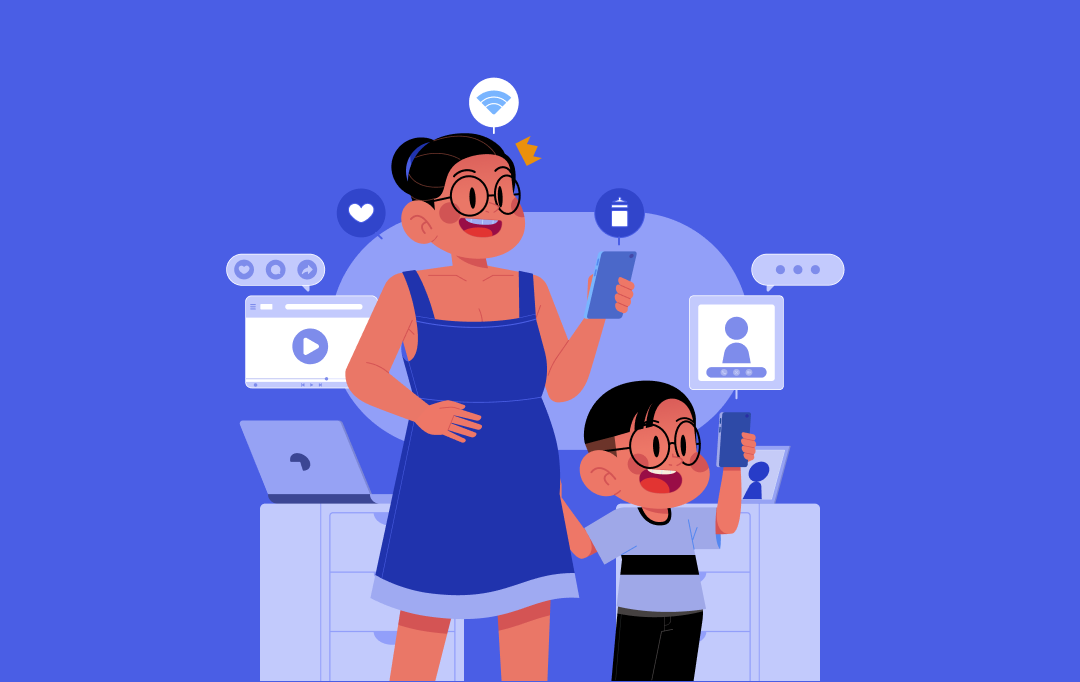- A Brief Glimpse into the OTT App Market: Understanding the Streaming Surge
- Features to Introduce in Your Netflix-like App
- 1. User Registration and Profile Management
- 2. Search Content
- 3. Payment Gateway
- 4. Watchlist
- 5. Social Features
- 6. Screen Mirroring or Screencasting
- 7. Multi-Language Support
- 8. Personalized Recommendations
- 9. Continue Watching Feature
- 10. In-app Notifications
- 11. Multi-device Syncing
- 12. Download for Offline Viewing
- 13. Parental Controls
- 14. Ratings and Reviews
- How to Create a Video Streaming App like Netflix?
- Define Your Niche and Content Strategy
- Decide on Monetization Model
- Plan Features and User Experience
- Choose the Right Tech Stack
- Design the UI and Build Wireframes
- Develop the App
- Secure Your Content and Data
- Test the App Thoroughly
- Launch and Promote Your App
- Gather Feedback and Keep Improving
- Technology Stack Businesses Can Leverage for a Robust Video Streaming App Development Process
- Frontend Development
- Backend Development
- Video Processing and Streaming
- Cloud Infrastructure and DevOps
- Security and Authentication
- Additional Features and Enhancements
- Testing and Quality Assurance
- Scalability Considerations
- Advanced Technologies That Can Help Your Video Streaming App Stand Out
- 1. Artificial Intelligence (AI) for Personalization and Efficiency
- 2. Adaptive Bitrate Streaming
- 3. Augmented Reality (AR) & Virtual Reality (VR)
- 4. Blockchain for Secure Content Delivery
- 5. Voice Search & Control
- 6. Real-time Analytics and Insights
- Cost to Develop a Video Streaming App like Netflix
- Factors Affecting the Cost to Develop a Video Streaming App Like Netflix
- Challenges of Developing a Video Streaming App like Netflix
- How Does an App Like Netflix Make Money?
- 1. Subscription Plans
- 2. Ad-Supported Viewing
- 3. Freemium Model
- 4. Pay-Per-View
- 5. Brand Collaborations
- Why Appinventiv Is the Right Partner to Build Your Netflix-Like Streaming App?
- FAQs
- Q. How to create a streaming app like Netflix?
- Q. What is the cost to develop a video streaming platform like Netflix?
- Q. How long does it take to build a streaming platform?
Key takeaways:
- Video streaming apps are rapidly replacing traditional cable TV, with platforms like Netflix reaching over 300 million subscribers by 2024.
- Personalization, seamless cross-device access, and intuitive UI are critical success factors in streaming app development.
- Development costs range from $40,000 to $200,000 +, depending on the complexity, features, and technology stack.
- The typical development timeline spans 4 to 9 months, influenced by the scope, integrations, and content strategy.
- Advanced tech like AI, adaptive bitrate streaming, and real-time analytics can significantly enhance app engagement and retention.
It’s 1 a.m., and you’re curled up on your couch, scrolling through an endless sea of movie thumbnails. You tap on a new series, and within seconds, you’re hooked—seamlessly streaming episode after episode, no buffering, no fuss. This is the magic of a video streaming app like Netflix.
To be honest, Netflix’s success isn’t just about shows or movies but mostly about seamless streaming, personalized recommendations, cross-platform accessibility, and a highly intuitive user interface. It’s this perfect blend of technology, design, and content that keeps users hooked and investors interested.
That’s why Netflix is an addictive experience, and over 300 million people worldwide were paying for Netflix subscriptions by the end of 2024. This number is not just a milestone, but a mirror reflecting the global shift in how users worldwide consume entertainment.
What if you could own this pool of addictive experience and create your custom-built video streaming app, one that captivates audiences and keeps them coming back for more? Whether you’re an entrepreneur with a bold vision or a developer itching to build the next big thing, crafting a Netflix-like platform is an exciting challenge that blends creativity, technology, and strategy.
For businesses like yours, the real question is, what does it take to create an app like Netflix? One that doesn’t just serve content, but creates habits, cultures, and conversations?
This blog will explore all that and more. From core features to monetization models, technology stacks, and estimated development costs, we will guide you through every major step of launching your own OTT app. If you are looking to enter the streaming business with a scalable, future-proof platform, this is where you begin.
AI that gets you, and a UX that’s pure fire. Ready to launch a streaming app that pops off?
A Brief Glimpse into the OTT App Market: Understanding the Streaming Surge
Undoubtedly, streaming platforms redefine the media industry, and the emergence of Over-the-top (OTT) platforms and video streaming apps, such as Netflix, has revolutionized content consumption, shifting audiences from traditional TV to on-demand streaming. Netflix’s success, driven by its original content and user-friendly interface, has paved the way for a booming over-the-top (OTT) industry.
Here are some key statistics highlighting the OTT and video streaming market’s growth:
- Global OTT Subscriptions: Projected to rise from 1.6 billion in 2023 to 2.1 billion by 2028, marking a CAGR of 5%. (source: PwC)
- OTT Revenue Growth: Expected to increase from $69.3 billion in 2023 to $100.5 billion by 2028, with the US accounting for nearly half of global revenue. (Statista)
- Netflix’s Financials: Reported $39 billion in revenue for 2024, a 15.7% increase from the previous year. (source: Business of Apps)
- Video Streaming Industry: Generated $199 billion in 2023, encompassing both free and paid platforms. (source: BusinessofApps)
- Largest Market Segment: OTT Video Advertising is expected to lead with $207.52 billion in global revenue by 2025. (source: Statista)
So, what does this growth signify for businesses?
It signals a massive opportunity to tap into a rapidly expanding market where consumer demand for on-demand, personalized video content is at an all-time high. Businesses across industries, from entertainment and education to fitness and eCommerce, can leverage video streaming apps to build deeper user engagement, unlock new revenue streams, and future-proof their digital presence. With the right tech stack, monetization strategy, and user experience, the time to enter the OTT space today isn’t just right but also strategic.
Features to Introduce in Your Netflix-like App
Netflix achieved huge success due to its content algorithm, which repurposes content based on users’ interests. Not only this, the app places importance on the ease of usability. So, before starting the video streaming app development process, let’s first understand the features to develop a video streaming app.
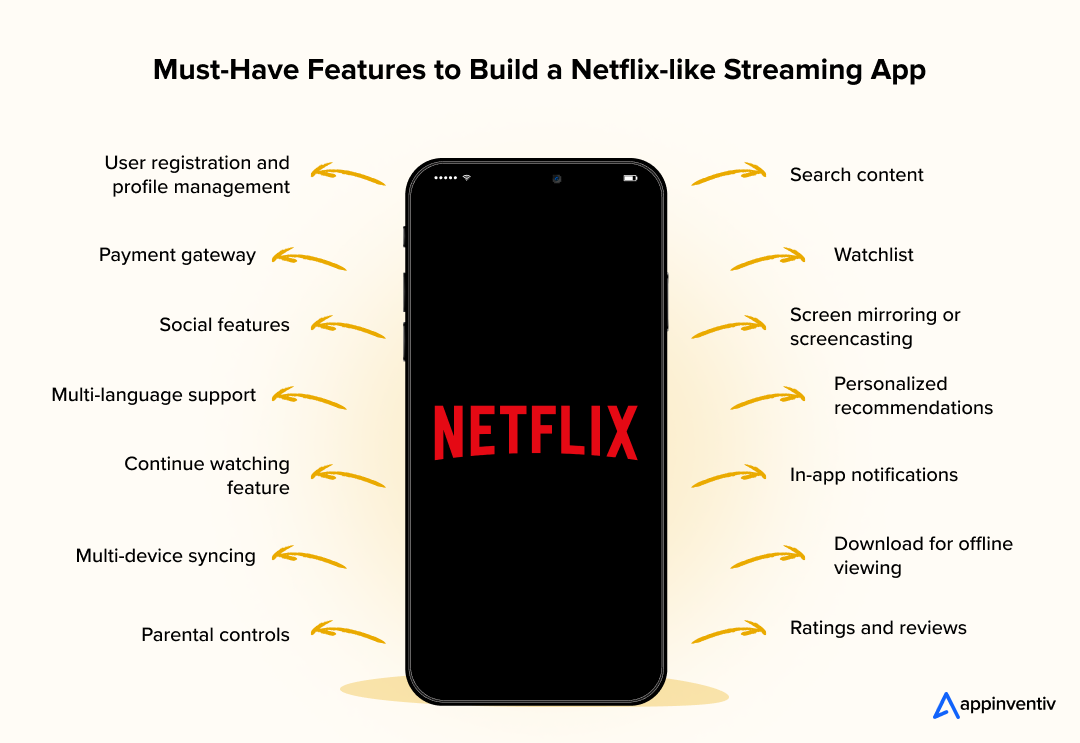
1. User Registration and Profile Management
The essential feature to focus on while Netflix-like entertainment app development is user registration and profile management. When it comes to these features, minimizing the requested details in the form is not enough. You should introduce the functionality of social media integration or SSO verification, as it improves the app user retention rate.
2. Search Content
As a platform offering thousands of video contents, it is imperative to consider the search and filter features. With them, users will be able to search for their favorite shows and movies based on various criteria, such as genre, language, and country of production.
3. Payment Gateway
With data security and privacy gaining huge momentum in the marketplace, a secure payment gateway integration is a profitable idea for apps like Netflix. When you provide users with the opportunity to pay via various fast payment options, it reduces the bounce rate on your app or website.
4. Watchlist
A watchlist is also one of the prominent features to consider when you decide to develop a video streaming application. This is the section where users add programs they wish to watch later. It reduces the effort required to search for the same TV show or series again and positively influences the app user retention rate.
5. Social Features
Users, these days, love to share anything and everything on social networking sites. In such a scenario, adding the social feature during the video streaming app development process is unavoidable. It helps market trending or newly released video content.
6. Screen Mirroring or Screencasting
You must include a screencasting feature that enables viewing the video on your app on other screens, such as a TV or Laptop, with the help of a Wi-Fi connection. It allows the app to act as a remote control, enabling users to enjoy content on larger screens with convenient playback options, such as play, pause, or rewind.
7. Multi-Language Support
This feature allows users to access content and navigate the app in their preferred language. By offering subtitles, audio tracks, and interfaces in multiple languages, the app becomes more inclusive and appealing to a global audience.
[Also Read: Key Challenges Faced in Developing Multilingual Mobile Apps]
8. Personalized Recommendations
This feature utilizes user watch history, ratings, and viewing patterns to suggest shows or movies that align with their preferences. It helps improve engagement and keeps users watching longer by offering content they are more likely to enjoy.
9. Continue Watching Feature
Users often leave shows midway and return later. A “Continue Watching” feature allows them to pick up right where they left off without having to search again, thereby improving the user experience and convenience.
10. In-app Notifications
Push notifications help users stay updated about new releases, upcoming shows, or content similar to what they’ve liked. Always ensure to add this feature during the process to build a video platform like Netflix, as it boosts re-engagement and encourages more frequent app visits.
11. Multi-device Syncing
Many users access the app from different devices. This feature ensures that watch history, preferences, and profiles stay synced, offering a seamless experience across smartphones, tablets, smart TVs, and desktops.
12. Download for Offline Viewing
This feature enables users to download content when connected to Wi-Fi and watch it later without an internet connection. It’s especially useful for travelers or users with limited data plans.
13. Parental Controls
By adding parental controls, you allow families to set viewing restrictions for younger viewers. Parents can filter content, set screen time limits, and monitor what kids are watching.
14. Ratings and Reviews
Users can rate shows and leave feedback, which helps others decide what to watch and provides your platform with valuable insights into viewer preferences.
The above Netflix app features made the application a global success. There’s no denying it. However, the user experience the app offers made users pick Netflix over other top video streaming apps.
Considering this, it is advisable to review the design guidelines before embarking on video streaming app development.
How to Create a Video Streaming App like Netflix?
For businesses that wish to create an app like Netflix, the overall process involves much more than just coding. The live streaming mobile app development process requires a clear strategy, the right features, and a strong backend infrastructure that can handle high traffic, support smooth content delivery, and ensure secure user data management.
From defining your niche and monetization model to selecting the right tech stack and ensuring a seamless user experience, every step plays a crucial role in building a successful streaming platform. Let’s look at the live video streaming app development steps in detail below:
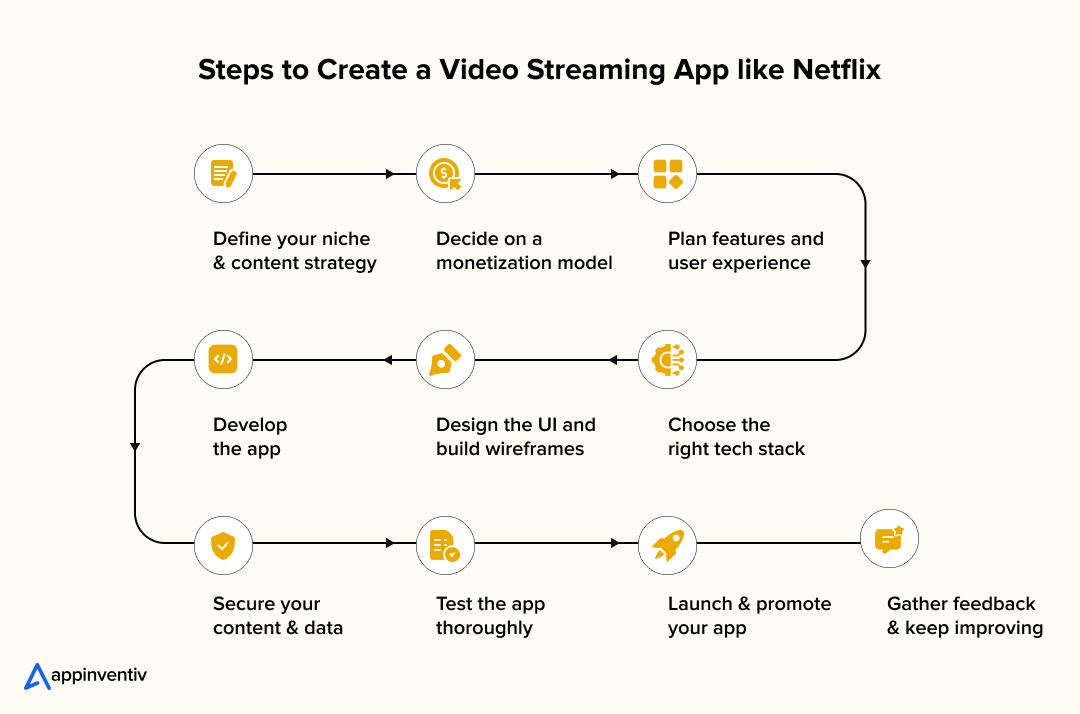
Define Your Niche and Content Strategy
Start by deciding what kind of content your platform will offer. It could be movies, TV shows, documentaries, educational videos, or niche-specific content, such as fitness or cooking. This helps you stand out in a crowded market.
Decide on Monetization Model
During this stage, choose how you want to earn from the app. For example, you can choose from monetization models like subscriptions, ads, pay-per-view, or a freemium model. The right monetization strategy depends on your target audience and type of content.
Plan Features and User Experience
List key features like user profiles, watchlist, multi-device support, payments, search filters, and content recommendations. Keep the interface simple and engaging, allowing users to find and enjoy the content easily.
Choose the Right Tech Stack
At this stage, businesses must select the right technologies to support seamless streaming, content storage, and a secure backend. You’ll need tools for video processing, database management, cloud hosting, and content delivery.
Design the UI and Build Wireframes
To create an app like Netflix, this stage required the businesses to work with designers to generate clean, intuitive layouts for each screen. Wireframes help map the user journey and define how the app will look and function before actual development.
Develop the App
Your development team will build both the user-facing side of the app and the backend that handles streaming, data, and user management. This step includes integrating video players, payment gateways, and APIs.
Secure Your Content and Data
Leveraging encryption technology and secure login features to safeguard both user data and your video content from piracy or unauthorized use. A safe platform fosters user trust and ensures compliance with relevant standards.
Test the App Thoroughly
During this phase of video streaming app development, test every aspect of your app, from sign-up and streaming to payments and notifications. Ensure the app functions smoothly across various devices and internet speeds, without any bugs or glitches.
Launch and Promote Your App
Once the app is ready, launch it on app stores and promote it through social media, influencer partnerships, and SEO. Encourage reviews and feedback to build credibility.
Gather Feedback and Keep Improving
After launch, monitor user behavior and reviews to identify what’s working and what needs improvement. Roll out updates regularly to fix issues, add new features, and improve performance.
Now that you understand the process of how to create a streaming app, let us move ahead and understand in detail the video streaming application development costs below.
We’ll hook you up with killer features like voice search, AR, and next-level recommendations that truly move the needle.
Technology Stack Businesses Can Leverage for a Robust Video Streaming App Development Process
To get a robust prodigy like Netflix that offers it all, it’s necessary to understand the technology stack for developing video streaming apps. Below are the details of the tech stack, segmented according to various aspects, including applications and data, utilities, DevOps, and business tools.

Frontend Development
The frontend is responsible for the user interface and client-side interactions, ensuring a smooth and engaging experience across devices.
- Frameworks and Libraries:
- React.js or Vue.js: For building responsive and dynamic web interfaces.
- React Native or Flutter: For cross-platform mobile apps (iOS and Android) with a single codebase, reducing development time and costs.
- Swift (iOS) and Kotlin (Android): For native mobile app development, offering high performance and platform-specific optimizations.
- Video Player:
- Video.js: A customizable, open-source HTML5 video player with support for adaptive streaming.
- Plyr: A lightweight, modern media player for web apps.
- ExoPlayer (Android) and AVPlayer (iOS): Native players for mobile apps, supporting advanced streaming protocols.
- UI/UX Tools:
- Figma or Adobe XD: For designing intuitive and visually appealing interfaces.
- Framer: For prototyping interactive UI components.
Backend Development
The backend handles the core logic, video processing, storage, and delivery, ensuring scalability and reliability.
- Programming Languages:
- Node.js: For real-time, event-driven applications with high concurrency, ideal for streaming apps.
- Python (with frameworks like Django or Flask): For rapid development and handling complex backend logic.
- Go: For high-performance, scalable microservices with low latency.
- Frameworks:
- Express.js (Node.js): For building RESTful APIs with minimal overhead.
- Spring Boot (Java): For enterprise-grade, secure backend systems.
- Databases:
- PostgreSQL or MySQL: For structured data like user profiles, metadata, and subscriptions.
- MongoDB or Cassandra: For unstructured or semi-structured data, such as video metadata or user preferences, with high scalability.
- Redis: For caching frequently accessed data (e.g., video recommendations) to reduce latency.
- API Protocols:
- REST or GraphQL: For communication between the frontend and the backend. GraphQL is preferred for flexible, real-time data fetching.
- WebSocket: For real-time features like live chat or synchronized viewing.
Video Processing and Streaming
This layer focuses on encoding, transcoding, storage, and delivery of video content to ensure high-quality streaming with minimal buffering.
- Video Encoding and Transcoding:
- FFmpeg: An open-source tool for encoding, decoding, and transcoding videos into multiple formats and resolutions (e.g., 480p, 720p, 1080p).
- AWS Elemental MediaConvert: A cloud-based transcoding service for professional-grade video processing.
- Zencoder or Bitmovin Encoding: For adaptive bitrate streaming and multi-device compatibility.
- Streaming Protocols:
- HLS (HTTP Live Streaming): Apple’s protocol for adaptive bitrate streaming, widely supported across devices.
- MPEG-DASH: A universal adaptive streaming protocol for dynamic quality adjustment based on network conditions.
- RTMP (Real-Time Messaging Protocol): For low-latency live streaming, often used with platforms like Wowza or Nginx.
- WebRTC: For ultra-low-latency, peer-to-peer live streaming or video calls.
- Content Delivery Network (CDN):
- Cloudflare Stream: For cost-effective video delivery with global caching.
- Amazon CloudFront: For low-latency, scalable video distribution.
- Akamai: For enterprise-grade, secure content delivery with robust analytics.
- Video Hosting and Storage:
- Amazon S3: For scalable, secure storage of video files.
- Google Cloud Storage: For high-availability storage with global access.
- Backblaze B2: A budget-friendly alternative for video storage.
Cloud Infrastructure and DevOps
Cloud platforms and DevOps tools streamline deployment, scaling, and maintenance of the streaming app.
- Cloud Providers:
- AWS: Offers a comprehensive suite of tools like S3, CloudFront, Elastic Transcoder, and ECS for scalable streaming solutions.
- Google Cloud Platform (GCP): Provides robust AI/ML integration and global infrastructure for video analytics.
- Microsoft Azure: Suitable for enterprise apps with strong support for hybrid cloud deployments.
- Containerization and Orchestration:
- Docker: For containerizing microservices, ensuring consistency across environments.
- Kubernetes: For orchestrating containers, enabling auto-scaling and load balancing.
- CI/CD Tools:
- Jenkins or GitHub Actions: For automated testing and deployment pipelines.
- CircleCI: For fast, reliable CI/CD workflows.
- Monitoring and Analytics:
- Prometheus and Grafana: For real-time monitoring of server performance and streaming metrics.
- New Relic or Datadog: For application performance monitoring and troubleshooting.
- Google Analytics or Mixpanel: For tracking user engagement and behavior.
Security and Authentication
Security is crucial for protecting content, user data, and preventing unauthorized access.
- Authentication and Authorization:
- Auth0 or Okta: For secure user authentication with SSO and multi-factor authentication (MFA).
- Firebase Authentication: For quick integration of authentication in mobile and web apps.
- JWT (JSON Web Tokens): For secure API authentication.
- Content Protection:
- DRM (Digital Rights Management):
- Widevine (Google): For Android and web browsers.
- FairPlay (Apple): For iOS and Safari.
- PlayReady (Microsoft): For Windows and Xbox.
- AES-128 Encryption: For securing video streams during transmission.
- DRM (Digital Rights Management):
- Network Security:
- SSL/TLS: For secure data transmission between clients and servers.
- Cloudflare or AWS WAF: For DDoS protection and web application firewalls.
- Data Privacy:
- Compliance with GDPR, CCPA, and other regional data protection laws.
- Vault (HashiCorp) or AWS Secrets Manager: For secure storage of sensitive data like API keys.
Additional Features and Enhancements
To stand out, streaming apps can integrate advanced features using specialized tools and application programming interfaces (APIs).
- Live Streaming:
- Wowza Streaming Engine: For scalable live streaming with low latency.
- Ant Media Server: For WebRTC-based ultra-low-latency streaming.
- Mux: For developer-friendly live and on-demand streaming APIs.
- Video Analytics and Recommendations:
- TensorFlow or PyTorch: For building AI-driven recommendation engines.
- AWS Rekognition: For video content analysis and metadata extraction.
- Algolia: For fast, relevant search and personalized content recommendations.
- Monetization:
- Stripe or PayPal: For subscription-based or pay-per-view models.
- AdTech Platforms (e.g., Google Ad Manager): For in-stream advertisements.
- Social Features:
- Socket.IO: For real-time chat during live streams.
- Twilio: For SMS notifications or in-app communication.
- Accessibility:
- WebVTT or SRT: For closed captions and subtitles.
- Speech-to-Text APIs (e.g., Google Cloud Speech-to-Text): For auto-generating captions.
Testing and Quality Assurance
Ensuring a bug-free, high-quality app requires robust testing tools.
- Unit Testing:
- Jest (JavaScript) or JUnit (Java): For testing backend and frontend logic.
- PyTest (Python): For backend testing.
- End-to-End Testing:
- Cypress or Selenium: For testing user workflows and UI interactions.
- Appium: For automated testing of mobile apps.
- Performance Testing:
- JMeter or LoadRunner: For stress-testing the app under high traffic.
- BlazeMeter: For cloud-based load testing of streaming performance.
- Video Quality Testing:
- Bitmovin Analytics: For monitoring video playback quality and buffering.
- TestRTC: For testing WebRTC-based streaming.
Scalability Considerations
To handle millions of concurrent users, the stack must support horizontal scaling and fault tolerance.
- Microservices Architecture: Break the app into smaller, independent services (e.g., user management, video processing, recommendations) for better scalability.
- Serverless Computing:
- AWS Lambda or Google Cloud Functions: For handling sporadic tasks like video transcoding or notifications.
- Load Balancing:
- NGINX or AWS Elastic Load Balancer: For distributing traffic across servers.
- Auto-Scaling:
- AWS Auto Scaling or Kubernetes Horizontal Pod Autoscaler: For dynamically adjusting resources based on demand.
Advanced Technologies That Can Help Your Video Streaming App Stand Out
To truly differentiate your video streaming app in today’s crowded market, leveraging advanced technologies is key. Used during the video streaming app development process, these innovative technologies not only enhance user experience but also provide powerful tools to boost engagement, retention, and revenue.
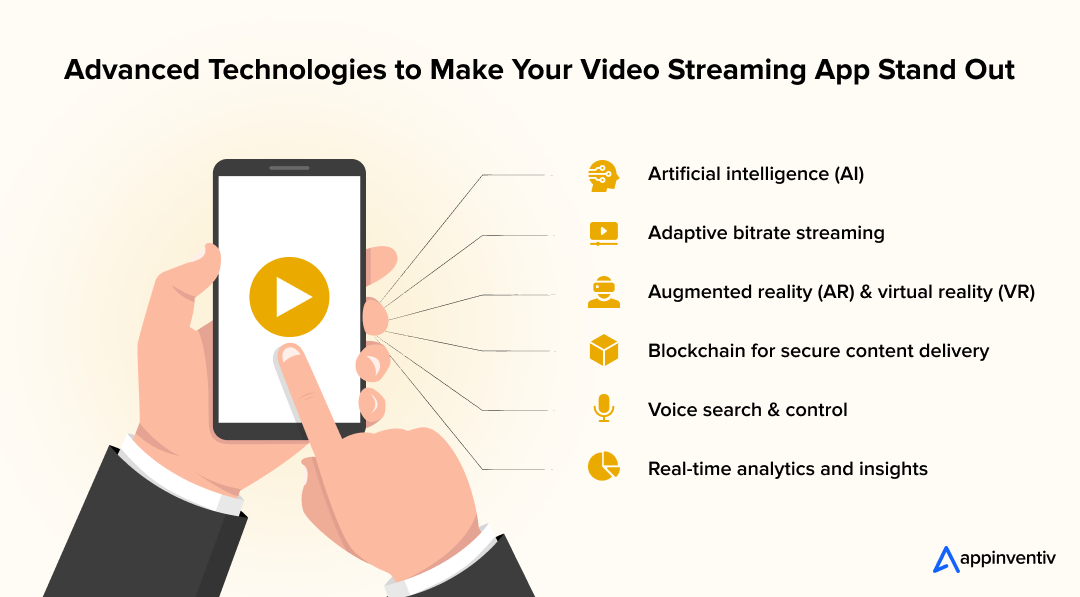
1. Artificial Intelligence (AI) for Personalization and Efficiency
AI is a game-changer in video streaming. By analyzing user behavior, preferences, and viewing history, AI-driven recommendation engines deliver highly personalized content suggestions that keep viewers engaged.
[Also Read: 10 Powerful Ways AI is Transforming OTT Streaming Platforms]
Beyond personalization, AI can optimize video compression, automate content tagging, and even power smart search features. Integrating AI gives your app a competitive edge by increasing user engagement and reducing churn, making it an essential investment for businesses ready to lead in streaming innovation.
Let us offer you a quick glimpse into how AI can help you build a streaming app that stands out, even beyond Netflix.
| AI Use Case You Can Leverage | How It Helps Your App |
|---|---|
| Content Recommendations | Suggests shows based on what users like, improving engagement and watch time |
| Smart Search | Helps users find content faster with predictive text, voice search, and visual recognition |
| Dynamic Thumbnails | Shows personalized preview images based on what each user is likely to click |
| Video Compression | Reduces file size without losing quality, speeding up streaming and saving bandwidth |
| Content Tagging | Automatically tags new videos by genre, mood, or actors to make discovery easier |
| Ad Targeting | Matches users with relevant ads, improving ad revenue and user satisfaction |
| Churn Prediction | Detects early signs of users leaving and triggers retention actions like offers or alerts |
| AI-Based Moderation | Flags inappropriate or copyrighted content to ensure platform safety and compliance |
2. Adaptive Bitrate Streaming
This technology automatically adjusts video quality based on the user’s internet speed and device capability, ensuring smooth playback without buffering. It significantly improves user satisfaction and reduces abandonment rates.
3. Augmented Reality (AR) & Virtual Reality (VR)
Integrating AR/VR can create immersive viewing experiences, especially for live events, concerts, or interactive content. This cutting-edge tech attracts tech-savvy audiences seeking unique, engaging formats.
4. Blockchain for Secure Content Delivery
Blockchain technology can enhance content security and copyright management by providing transparent, tamper-proof records of ownership and distribution, protecting your intellectual property and building trust with creators and users.
5. Voice Search & Control
Voice-enabled navigation allows users to find and control content hands-free, delivering convenience and accessibility—especially on smart TVs and mobile devices.
6. Real-time Analytics and Insights
Advanced analytics platforms track user interactions, viewing patterns, and engagement metrics in real time, enabling data-driven decisions for content strategy and marketing, helping you tailor your offerings precisely to your audience’s demands.
Cost to Develop a Video Streaming App like Netflix
To give you a quick idea, building a video streaming app like Netflix can cost anywhere from $40,000 to $200,000 or more. The price varies depending on the complexity of features, the platforms on which you want the app, the tech stack used, and the experience of your development team.
Let us offer you a quick formula to estimate the cost to create an app like Netflix, since no two apps are built the same way:
Video Streaming Application Development Cost = Total Development Time × Hourly Rate of Developers
Total development time means the number of working hours it takes to build your app from start to finish. This includes designing the interface, writing the code, integrating features like video players or payments, testing the app, and fixing bugs.
The hourly rate of developers is the amount a developer or development team charges for each hour they work on your project.
Now let’s look into how the cost breakdown to develop an app like Netflix as per different development stages:
- Requirement gathering and planning: $3,000 to $7,000
- UI and UX design: $5,000 to $15,000
- Frontend and backend development: $20,000 to $80,000
- Video player integration and streaming setup: $5,000 to $20,000
- Payment gateway integration: $2,000 to $8,000
- Admin panel and content management: $4,000 to $12,000
- Testing and quality assurance: $3,000 to $10,000
- Post-launch maintenance and updates: $5,000 to $15,000 annually
Each stage plays a role in the total cost and should be planned carefully based on your goals, timeline, and app features. A basic app with core features will be cheaper, while a full-scale platform like Netflix with advanced AI, multiple user profiles, and multilingual support will be on the higher end. Let’s move on and understand the factors affecting the live video streaming app development cost in detail below.
Factors Affecting the Cost to Develop a Video Streaming App Like Netflix
Building a video streaming app like Netflix involves many moving parts that influence the overall development cost. Understanding these factors helps in budgeting wisely and setting realistic expectations for your project.
| Factor | Impact on Cost |
|---|---|
| App Features & Complexity | More advanced features like live streaming, multi-device sync, offline viewing, and user profiles increase development time and cost to create an app like Netflix significantly. |
| Video Hosting & CDN | Integrating reliable video hosting and content delivery networks to ensure smooth streaming adds to infrastructure expenses. |
| User Interface & Experience | A polished, intuitive UI/UX demands more design effort and testing, thus raising costs. |
| Backend Infrastructure | Developing a scalable, secure backend capable of handling millions of users involves complex architecture and higher expenses. |
| Video Encoding & Compression | Efficient video encoding and compression to support multiple resolutions require specialized development, impacting cost. |
| Third-Party Integrations | Incorporating payment gateways, analytics, recommendation engines, and social logins adds to integration complexity and cost. |
| Content Licensing & DRM | Implementing Digital Rights Management (DRM) and managing content licensing affects both development and ongoing operational costs. |
| Streaming Protocols | Supporting multiple streaming protocols (HLS, DASH, RTMP) for compatibility adds to technical complexity and cost. |
| Testing & Quality Assurance | Extensive testing on various devices and networks is necessary for smooth playback, adding to development timelines and the overall cost to create an app like Netflix. |
| Security Measures | Strong security for user data and content protection requires investment in encryption and secure authentication. |
| Maintenance & Updates | Continuous updates, bug fixes, and server upkeep are ongoing costs that must be accounted for from the start. |
| Marketing & Launch Support | Budgeting for app launch activities and initial user acquisition can influence overall project cost indirectly. |
To understand in detail the development steps and costs associated with OTT platform like Netflix, check out our blog on- A Comprehensive Guide To Custom OTT Development: Market, Features, and Cost
Snag your custom quote now to chat with our app dev pros and nail down the cost for your Netflix-style video streaming app!
Challenges of Developing a Video Streaming App like Netflix
Video streaming app development at the scale of Netflix is a complex endeavor that requires addressing numerous technical and operational challenges. Successfully overcoming these obstacles is essential to deliver a seamless, engaging user experience while maintaining scalability and security.
| Challenge | Explanation | Solution |
|---|---|---|
| Scalability and Performance | Handling millions of concurrent users without performance drops or downtime is difficult due to sudden traffic spikes. | Use cloud infrastructure with auto-scaling capabilities and Content Delivery Networks (CDNs) to build a video streaming app like Netflix. This will distribute theload efficiently. |
| Content Delivery and Latency | Streaming high-quality videos globally demands minimizing buffering and latency, especially for live broadcasts. | Optimize streaming protocols like HLS and DASH, and deploy edge servers closer to end-users to reduce delay. |
| User Experience & Interface | Users expect fast, intuitive, and visually appealing interfaces across devices, which requires careful design and testing. | Invest in thorough UI/UX research, build adaptive interfaces, and perform extensive cross-device testing to ensure consistency. |
| Video Encoding and Compression | Balancing video quality with bandwidth limits is challenging, especially when supporting multiple resolutions and devices. | Implement advanced video codecs such as HEVC or AV1 and adaptive bitrate streaming to dynamically adjust quality based on connection. |
| Security and DRM | Protecting valuable content from piracy and unauthorized access is critical in the streaming industry. | Integrate strong Digital Rights Management (DRM) solutions, end-to-end encryption, and secure user authentication mechanisms. |
| Content Management | Managing, categorizing, and updating vast content libraries efficiently requires robust backend systems. | While carrying out the steps to create an app like Netflix, deploy scalable Content Management Systems (CMS) with metadata tagging and automated workflows to streamline operations. |
| Multi-Device Compatibility | Streaming apps must work seamlessly on smartphones, tablets, smart TVs, and web browsers, each with unique requirements. | Develop cross-platform apps using responsive design and optimize for platform-specific performance characteristics. |
| Personalization & Recommendations | Providing personalized content suggestions in real time is complex and requires processing large volumes of user data. | Utilize AI and machine learning algorithms to analyze user behavior and deliver tailored recommendations dynamically. |
| Regulatory Compliance | Navigating differing content regulations, AI rules and compliances, copyright laws, and privacy policies across countries complicates global rollout. | Engage legal experts, implement region-specific content restrictions, and ensure data privacy compliance according to local laws. |
| Monetization Models | Supporting multiple revenue models—subscriptions, ads, pay-per-view—requires flexible, scalable payment and ad systems. | Build modular payment gateways and ad management platforms integrated with analytics to optimize revenue streams. |
How Does an App Like Netflix Make Money?
The business and revenue model of Netflix app is essentially backed by a subscription-based model, supported by tiered pricing plans, original content production, and international expansion. Let’s look into the major monetization strategies for video app development in detail below:

1. Subscription Plans
Most video streaming apps charge users a fixed monthly or yearly fee to access their content. Plans typically vary by video quality, number of screens, or features such as offline downloads. This model generates consistent and predictable revenue.
2. Ad-Supported Viewing
Some platforms offer lower-cost or free plans that include ads. Brands pay the app to show ads before or during videos. This helps the app generate revenue while providing users with an affordable option to access content.
3. Freemium Model
This model provides users with basic access to the platform at no cost. To unlock premium features, such as ad-free viewing, early access, or exclusive shows, users can upgrade to a paid plan. It helps build a large user base and gradually turns free users into paying ones.
4. Pay-Per-View
Instead of full access, users pay for individual movies, shows, or live events. This model is useful for newly released content or special performances where users are willing to pay once to watch.
5. Brand Collaborations
Apps with popular original content often sell branded products like t-shirts, posters, or collectibles. They also team up with well-known brands to create limited-edition items, launch promotions, or co-host events that drive revenue.
Why Appinventiv Is the Right Partner to Build Your Netflix-Like Streaming App?
We hope this blog has helped you understand everything related to live video streaming app development. Now, selecting the right team is a crucial step in transforming your idea into a successful app that users enjoy and continue to use.
As a leading video streaming app development company, we focus on building digital products that are smooth, scalable, and easy to use. From creating live content platforms like ABP Live to building creative apps like Gully Beat that support user-generated content, our work covers different kinds of media and entertainment experiences.
Video streaming apps require more than just a good design. They need robust backend systems, seamless video playback, and features that function effectively even during peak traffic. That’s why every decision we make is based on long-term performance.
It’s also important to create a great user experience. Users should be able to find what they want quickly, switch devices easily, and enjoy content without buffering or errors. Our video streaming app developers understand that a well-built app keeps users engaged and turns them into loyal viewers.
Whether it’s designing a clean interface, adding secure payment systems, or setting up strong video streaming features, each part of the app we develop for you is carefully planned to make sure it works well and gives users a great experience.
As an OTT video platform development services provider, we combine technical precision with user-first design to build platforms that scale seamlessly. From content delivery to monetization, we ensure every feature drives engagement and business growth.
If you are planning to build a video streaming app like Netflix, it all starts with a solid plan, the right technology, and a team that understands your goals. Let’s work together to build an app that stands out in today’s digital world.
FAQs
Q. How to create a streaming app like Netflix?
A. Creating a streaming app like Netflix involves a few essential steps that bring together technology, design, and content delivery. Here’s a quick breakdown of the process:
- Research the market and define your target audience.
- Choose the core features such as user profiles, search, recommendations, and video player.
- Design an intuitive user interface for multiple devices.
- Develop the backend infrastructure for content management and streaming.
- Integrate video hosting, encoding, and content delivery networks (CDNs).
- Implement security measures like DRM and encryption.
- Test thoroughly across devices and network conditions.
- Launch the app and continuously update based on user feedback.
Q. What is the cost to develop a video streaming platform like Netflix?
A. The Netflix-like video streaming app development cost typically ranges from $40,000 to $200,000. Basic versions with essential features and limited content libraries fall at the lower end, while advanced platforms with AI-powered recommendations, live streaming, and extensive security measures increase development costs. Factors such as regulatory compliance, integration complexity, user interface design, and ongoing maintenance also influence the overall budget.
Q. How long does it take to build a streaming platform?
A. Live video streaming app development usually takes between 4 to 9 months, depending on the app’s complexity and the development team’s size. Basic apps with core functionalities may be developed within 4 to 6 months, while feature-rich platforms with advanced AI, multi-device support, and robust backend infrastructure typically require 7 to 9 months or more for thorough development and testing.


- In just 2 mins you will get a response
- Your idea is 100% protected by our Non Disclosure Agreement.
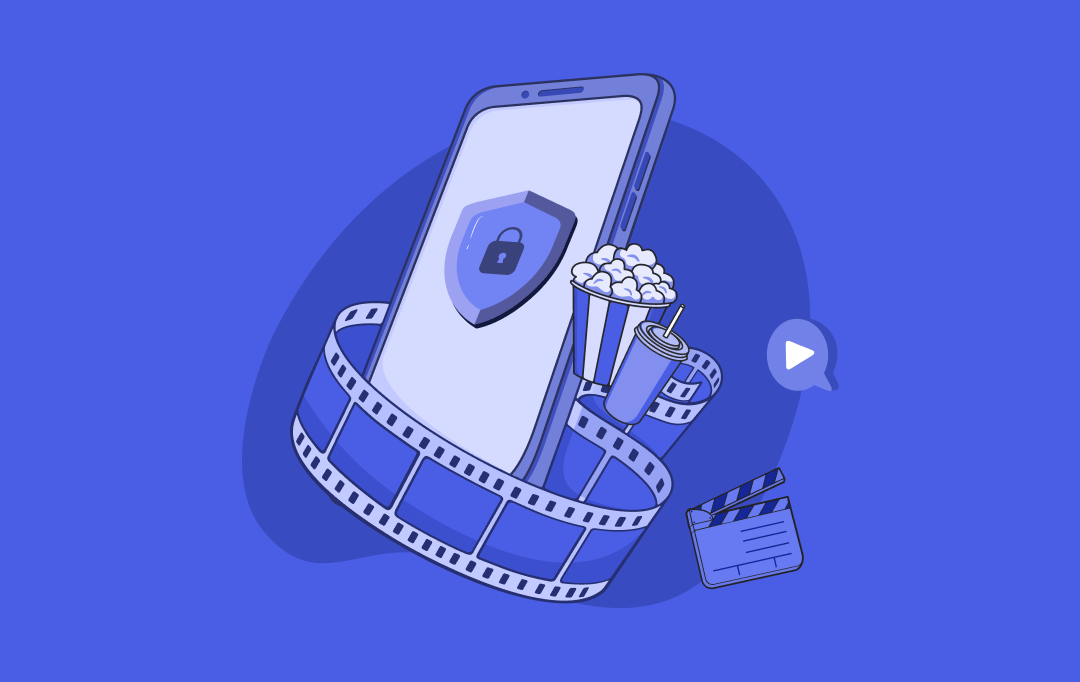
Top 10 OTT App Security Risks and How to Block Them
As the demand for on-demand content continues to surge, OTT platforms handle more than just high traffic; they manage vast amounts of user data, digital assets, and third-party integrations with significant security implications. What was once considered a niche service is now a critical infrastructure layer in the global media and entertainment landscape, making it…
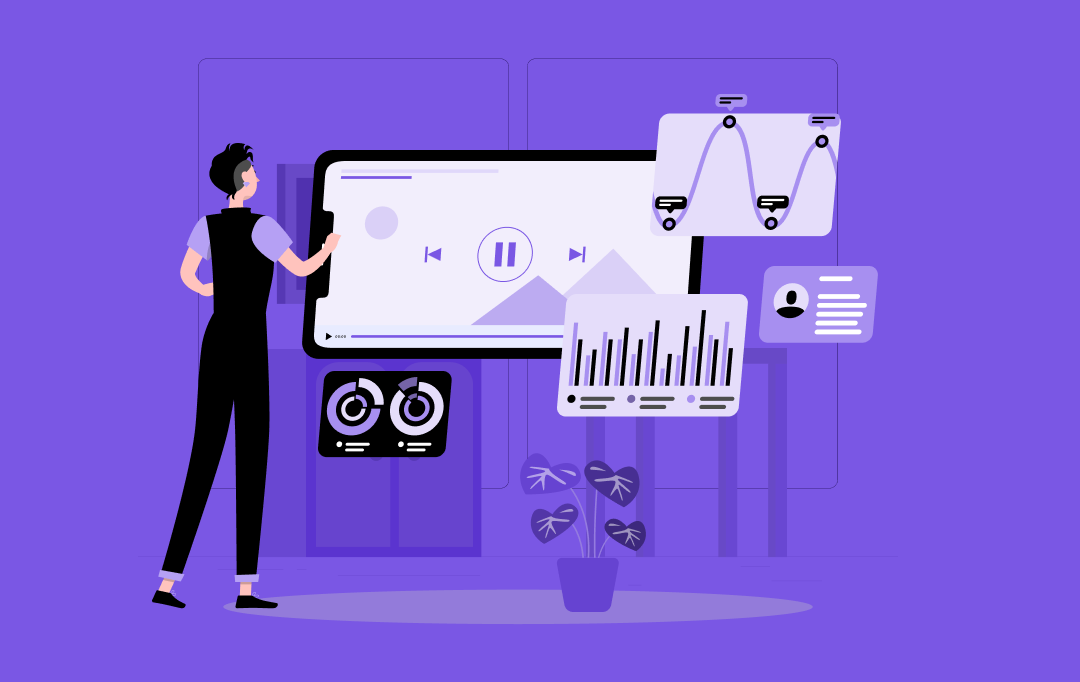
10 Reasons OTT Data Analytics is Critical for Your Business
Key takeaways: OTT analytics are crucial for understanding user behavior and optimizing content strategies. Real-time data enables businesses to make informed decisions promptly. Integrating analytics into OTT platforms can enhance user experience and drive revenue. Appinventiv develops and deploys advanced analytics solutions tailored to your unique business needs. Launching an OTT platform today is easier…

10 Powerful Ways AI is Transforming OTT Streaming Platforms
OTT streaming platforms are revolutionizing how folks watch content, and artificial intelligence in OTT platforms is a driver behind this transformation. Global OTT subscriptions are expected to reach 1.7 billion by 2027; good content is no longer enough in such a crowded space. How smartly that content is tailored and delivered to each viewer counts.…
